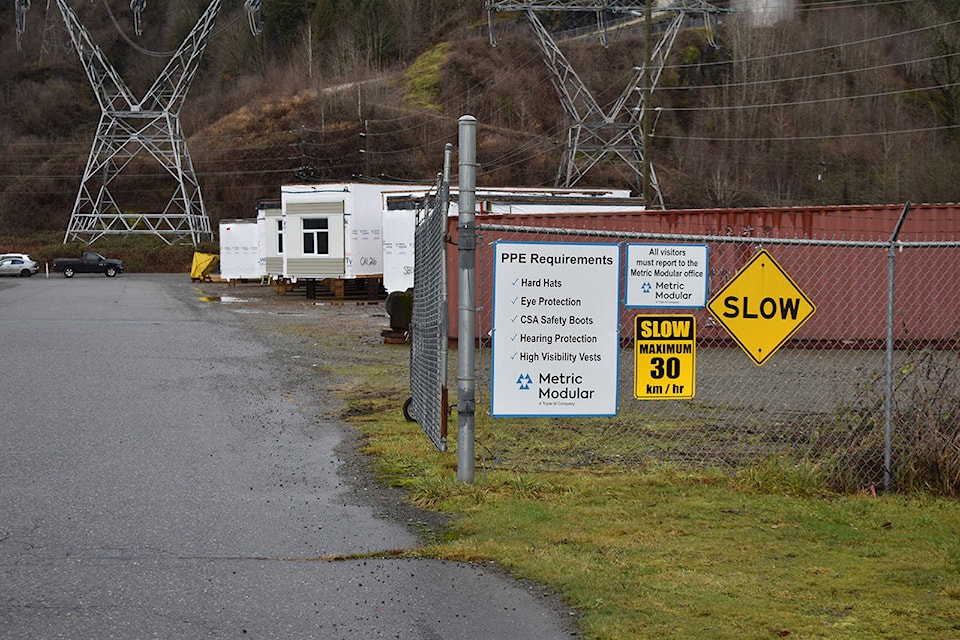The value of the District of Kent’s light industrial properties has gone up by more than 50 per cent, according to BC Assessment’s 2019 numbers.
In the district, light industrial properties are now worth an average of 53.5 per cent more than they were in 2018.
This is significantly more than Chilliwack and Hope’s increases (30.7 per cent and 33.4 per cent respectively), and is actually the third highest in the province. (Only rural Vanderhoof and rural Squamish saw more, with 59.8 and 58.5 per cent respectively.)
“When we were doing assessment reviews, as we do every year, we did notice a couple of these properties did appear to be assessed below what we feel their market value would be,” Brian Smith, the Fraser Valley’s deputy assessor for BC Assessment, said. “So we did a reassessment on a variety of different properties … and they saw a significant increase.”
RELATED: Average Chilliwack house assessments up 10 per cent
According to Kent’s director of financial services Judy Lewis, only four of the district’s 21 light industrial properties saw those major market corrections. The rest saw a typical change of about 12 per cent.
“There’s only four properties, and two of them are owned by the same property owner,” Lewis said. “But, (the change) is huge. It’s quite significant.”
Lewis said BC Assessment told her those properties saw “their rental rate increase and their capitalization rate decrease significantly,” which caused the assessment increase.
What this change means for property owners will largely depend on property tax rates, and how individual property values have changed based on the average.
“It doesn’t mean more or less property tax collected, but it can mean a shift between owners,” Lewis said.
If overall values go up, the tax rate will likely go down, she explained, since council won’t need to collect as much tax per $1,000 to get the same total amount. But property owners who saw a market value increase that was greater than the average will be paying more in comparison, since they have more value to be taxed on.
In 2018, light industrial property owners paid $311,000 in taxes — only about 5 per cent of the approximately $6 million in taxes collected from the district. They paid $17.76 for every $1,000 in taxable value.
RELATED: Property tax increase the result of inflation, says Kent mayor
Although Kent’s assessment increase is unusually high for light industry, it’s not the only one on the rise.
Industrial property values are actually rising across the Fraser Valley, especially as more businesses move east.
“Some of the smaller industrial players that were previously located in the western market — Surrey, Richmond and Delta — are being pushed out further east to find more affordable industrial land,” Smith said. “So I think that’s … pushing larger increases throughout the Fraser Valley.”
In BC Assessment’s review, light industrial properties are those which are used for extracting, processing, manufacturing or the transportation of products. (This means properties that are zoned light industrial might not actually qualify as light industry with BC Assessment.)
“People are looking for different alternatives that they are getting priced out of in the western market,” Smith said. “So access to land is really important to industrial properties, and large sums of it. And there’s potentially more availability out in the eastern market right now.”
RELATED: Giant Molson beer tanks to begin journey to Fraser Valley brewery site
But Lewis said she doesn’t believe that’s the case in the District of Kent.
“We need to see more evidence that is also applicable in Kent,” she said.
“There’s not a huge demand for commercial properties in Kent the way there is in other municipalities,” she continued. Although the district has a tax exemption program for businesses, “they’re not lining up at the door wanting to expand their commercial property.”
“I’m not convinced that looking at the rest of the Fraser Valley is indicative of what’s happening in Kent,” she said.
grace.kennedy@ahobserver.com
Like us on Facebook and follow us on Twitter
